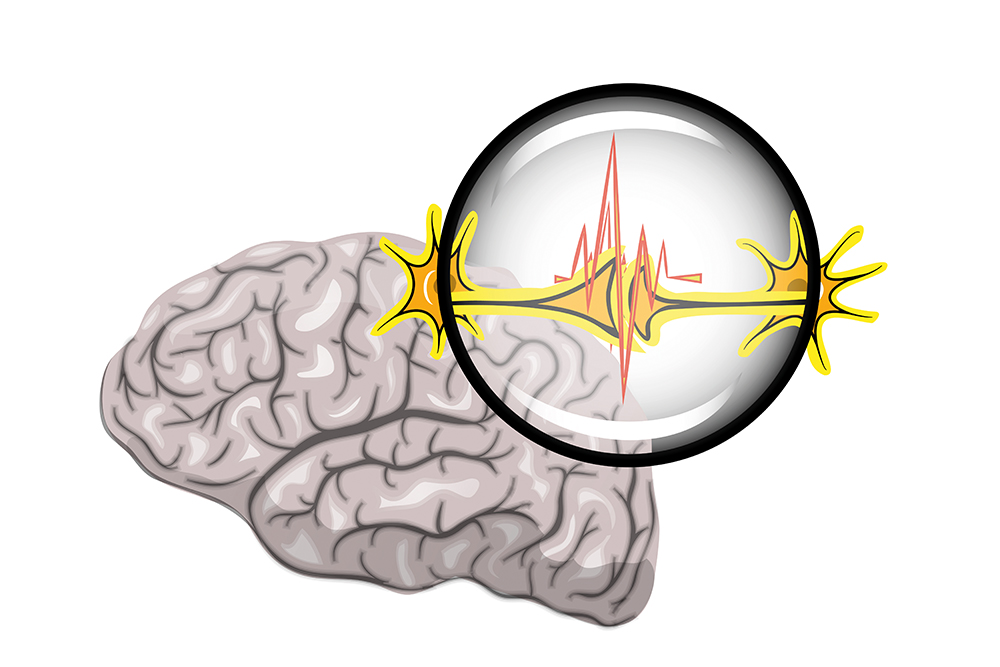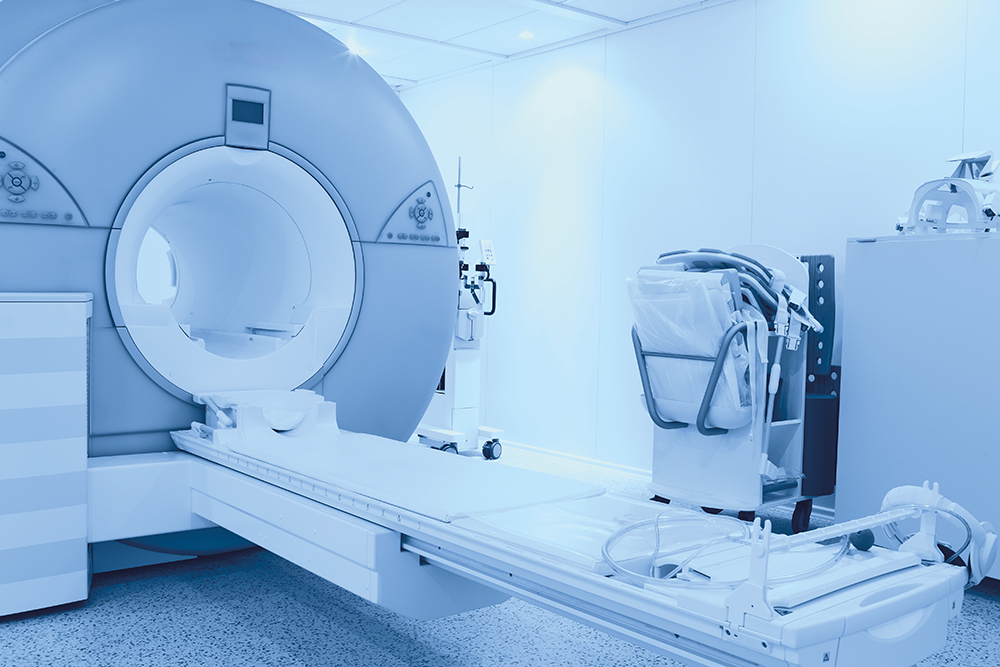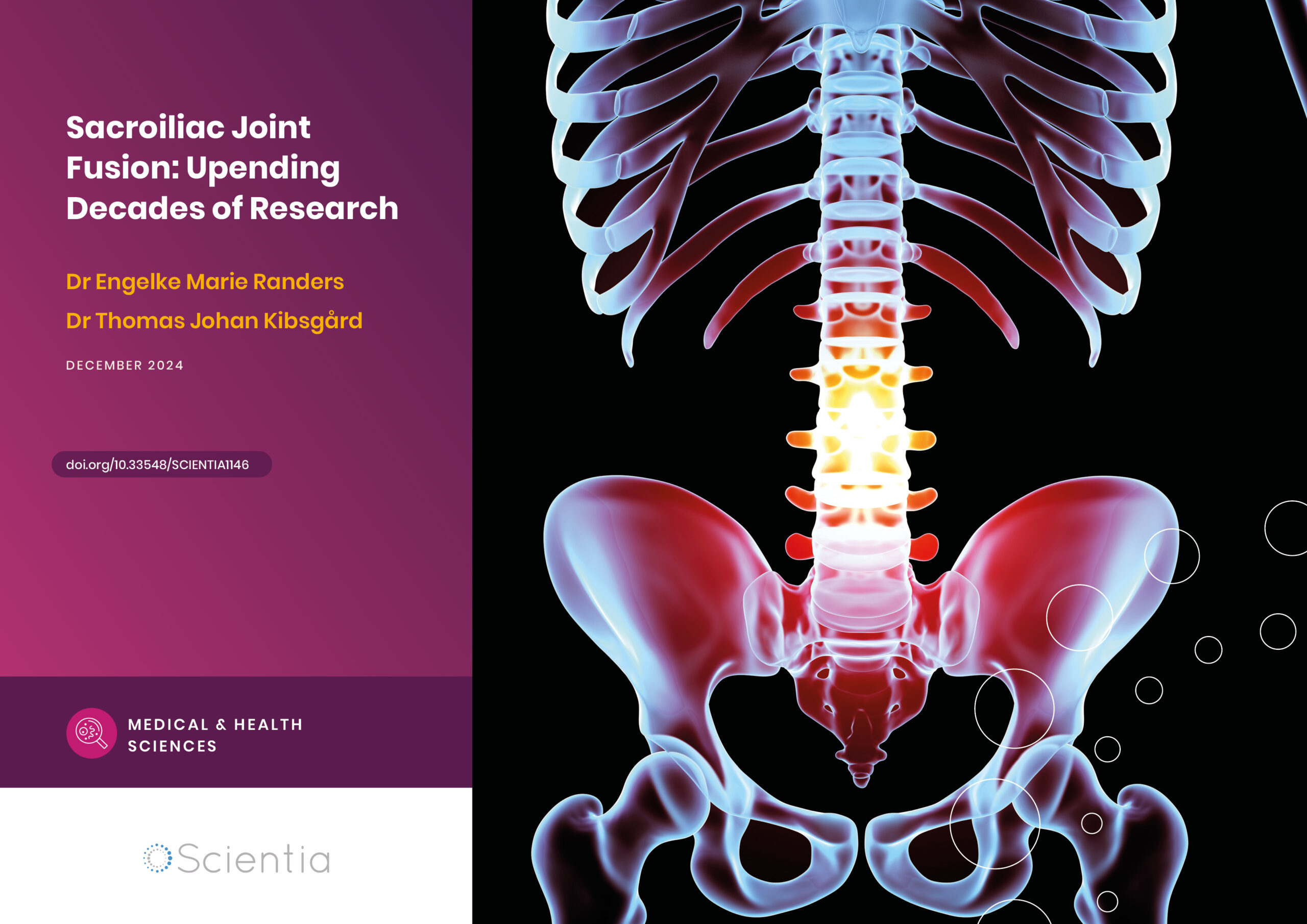Dr Jessica Galgano – Exploring the Neural Mechanisms of Speech and Language to Inform Clinical Practice
The neural mechanisms behind speech and voice production are intricate but not yet fully characterised. For speech and vocal disordered populations, understanding the central mechanisms behind speech and sound production is essential to improve treatment options and rehabilitation techniques. Taking a scientist-practitioner approach, Dr Jessica Galgano, of New York University Grossman School of Medicine and founder of Open Lines Speech and Communication, is researching the underpinnings of speech and the clinical efficacy of current treatments for voice, speech, and language disorders.
The Voice and the Brain
Speech and language are fundamental components of human experience. Speech allows us to express our thoughts and feelings, communicate ideas, and connect with the world around us. Despite its ubiquity, the brain mechanisms which allow speech to occur are not fully understood. Speech and voice disorders affect almost 30% of people at some point in their lives and are the main cause of communication difficulties. For these individuals, uncovering the pathways and underpinnings of how speech is produced in the brain can help us develop new and more effective treatments and rehabilitation programmes.
When considering how the brain is activated during speech, it is important to identify the different components involved. Voice refers to sound produced by speech organs, namely the larynx, while speech refers to articulation and movement of the lips, mouth, and tongue to produce specific sounds. Language, on the other hand, concerns the myriad cognitive processes involved in producing and understanding the rules of linguistics and communication.
Revealing the neural circuits and pathways associated with voice and speech in normal populations can help identify the networks involved and how these may change as we age or when damage or illness occurs. Dr Jessica Galgano has brought together a team from a number of universities and academic medical centres around the country, including Colombia University, Memorial Sloan Kettering Cancer Center, Princeton University, University of Colorado, and Yale School of Medicine. Together, they are striving to characterise these neural pathways to help people with speech or voice disorders as a result of stroke, cancer, Parkinson’s disease, and other neurological conditions.

Emotionally Speaking
One of Dr Galgano’s main findings during her time as a researcher relates to the role of emotional pathways in the brain during the production of speech. The impact of emotive states on voice has been studied comprehensively in many fields, ranging from medicine to the arts, and the voice can reflect an individual’s emotional state. Indeed, researchers have described the voice as the ‘barometer of emotion’ due to the significant influence that psychogenic stress can have on voice.
A condition known as adductor spasmodic dysphonia causes the vocal folds to come together abnormally when speaking, becoming especially pronounced during anxious states and resulting in strangled or shaky speech. Strong emotions can influence anyone’s speech, such as when people experience difficulty expressing grief or the loss of voice during stressful situations, like being put on the spot. Improving our understanding of how emotion and speech are interlinked can help improve therapies and treatments for patients and deepen our understanding of how cognitive and emotional processes are integrated during speech.
There is substantial evidence so far to suggest that an area called the periaqueductal gray (PAG) is strongly associated with vocalisation and respiratory control during vocalisation, even in lower mammals. The PAG forms an interface between the forebrain limbic system and medullary autonomic centres. It receives afferents from the hypothalamus and amygdala, the latter which is an integral part of the limbic system, or the emotional brain.
When animals vocalise this typically reflects a heightened level of stimulation of the PAG and conveys information about the animal’s emotional state. Lesions of the PAG are known to disrupt vocalisations in humans and other mammals, be involved with emotional responses, and show greater activity in humans when a threat comes close. For these reasons, Dr Galgano considered the PAG is an important part of the network needed to coordinate respiratory and laryngeal motor patterns that play a part in voice production, especially under heightened emotional states or stress.

Visualising the Voice: Informing Clinical Practice Through Research
Functional magnetic resonance imaging (fMRI) allows scientists to visualise regions of neuronal activation by detecting changes associated with blood flow in the brain. In a key study, Dr Galgano used fMRI to look at which areas of people’s brains are more or less active during different activities: sustained vocalisation of the ‘uh’ sound with closed lips or sustained exhalation through the nose. When studying the brain signals associated with speech it is important to be able to differentiate the signals associated with movement of the mouth from the signals associated with voice production in the larynx itself.
This means that when designing tasks for trial subjects to perform, researchers must include some sort of control, where normal movements of the mouth and respiratory system can be compared to vocalisations in order to identify the differences. Comparing the two activities provides a baseline to see which areas are more active during the production of voice specifically, rather than just activation of motor neurons in the throat.
Dr Galgano’s findings were clear. During vocalisation, an area called the left ventral laryngeal motor area (LMA) was coupled with activation in the PAG. Whole brain analysis also revealed increased coupling between the PAG and the amygdala, an area heavily involved in emotion and anxiety. The functional connectivity between these regions was significantly more pronounced during voluntary production of vocalisations compared to exhalation and suggests that motor voice control is linked with parts of the limbic system.
This discovery is consistent with what we know to be the case in animals, where the PAG and amygdala have a close relationship to allow integration of anxiety behaviours in response to threat. In humans, a similar connection may mean that stressful situations or strong emotions can affect the PAG’s ability to mediate motor control during voicing and speaking. Elucidating the brain areas involved in this can help us identify the processes which might be disrupted in psychogenic or neurogenic disease.
This important work underscores the importance of exploring the basic mechanisms of change underlying the neuronal networks that govern both emotion and voice and speech in clinical as well as research settings. As Dr Galgano explains, the human voice provides critical insight into an individual’s anxiety as well as their ability to regulate their emotions. As such, the potential impact of emotion on symptomatology should be considered a key part of clinical evaluation and intervention.

Vocal Potential
Before she researched emotional influences on speech, Dr Galgano studied the nerve potentials which occur to initiate it. This is of particular importance for patients suffering from Parkinson’s disease, where initiation of a movement or action is acutely impaired. Her work identified a novel method to analyse these potentials using high density electroencephalography which overcame shortcomings associated with earlier methods. A brain region known as the middle frontal gyri and the bilateral LMAs were localised as the source of the voice-related potential. Identifying these areas can help us find out the pathways involved in initiating speech, something which has previously been very difficult to study.
Other important aspects of voice and speech under investigation include the complex pathways which control the precise, coordinated movement required to modify pitch. This is something we do unconsciously and naturally during speaking and singing but takes a great deal of synchronisation between respiratory and articulatory systems. Neuroimaging techniques can allow researchers to more clearly delineate such networks underlying control of the voice.
Dr Galgano recognised that previous attempts to find neural correlates of the movements associated with pitch control were impacted by difficulties controlling confounding variables and separating the physical and cognitive aspects. Using fMRI, Dr Galgano and her team were hoping to properly identify the central cortical mechanisms involved in pitch variation.
Her findings were in accordance with prior research and also identified a region known as the insula as being active during modulation of pitch. This area has previously been shown to be involved in the detection of sound, which is an essential component of vocal monitoring and adjustment.
Many other areas were identified as having an involvement in voice control, and interestingly, though the inferior frontal gyrus in the right hemisphere produced greater activity than the area of the left hemisphere during high and low pitch generation, the left hemisphere of the brain showed increased activation on the whole during high pitch production vs. comfortable production and low pitch production vs. comfortable production, except for bilateral activation in the cerebellum. Dr Galgano suggests this may be due to its role in controlling the rhythm and intonation of speech (prosody) and its involvement in language production. Future studies could take a more in-depth look at why the left hemisphere plays a slightly larger role in pitch to better understand how the minutiae of speech are controlled.

The Road Ahead
The importance of speech and language for our health and emotional wellbeing should not be overlooked. Communication is a major aspect of our lives as social beings and furthering our understanding of how we produce speech in health and disease can help improve the way we treat such disorders.
Dr Galgano describes a case study of a woman suffering from vocal cord paralysis following metastatic cancer and chemotherapy. Interestingly, the physical changes to her throat and larynx following surgery seemed to bring about changes in the neural pathways in her brain involving speech production. The functional changes which occurred in the brain maps of the patient before and after surgery suggest that the central nervous system (CNS) has a significant ability to modulate neural networks and reorganise areas involved with planning, implementation, and control of systems needed for voice production.
The clinical improvements observed in this patient correlated with the changes in neural activation and lend credence to the theory that CNS changes can improve the ability to produce voice, possibly due to the ability to process new sensory information following surgery. Understanding the way in which the brain can adapt to such changes can perhaps further our knowledge of how neural changes affect physiology. Dr Galgano integrates these understandings and insights gained from cutting-edge research from diverse medical fields and applies it to the latest clinical best practices with the use of the proprietary PRESENCE Approach™, which uniquely addresses any impact emotions or psychological states may have on one’s ability to think and communicate.
The work of Dr Galgano has improved the lives of thousands of individuals suffering from speech disorders and voice pathologies. Her research continues to advance the field of study to allow new rehabilitation techniques and treatments to be developed and improve our knowledge of the neural underpinnings of and the impact of emotion and stress on speech and voice.
Reference
https://doi.org/10.33548/SCIENTIA640
Meet the researcher

Dr Jessica Galgano
New York University Grossman School of Medicine
New York, NY
USA
Dr Jessica Galgano earned her PhD (distinguished) from Columbia University in Biobehavioural Sciences in 2007, having joined Memorial Sloan Kettering Cancer Center as an assistant research scientist in 2006 and New York University Grossman School of Medicine as an associate research scientist and later as a faculty instructor in 2010. Her research has focused on the neural underpinnings of speech and voice and the effectiveness of current treatments for neurogenic speech disorders with a special interest in the direct structural and functional connections between core limbic system structures and voice/speech-motor areas. Dr Galgano’s future investigations will further describe these connections, both via brain imaging studies and other types of investigations, to inform individuals about the importance of managing mental health for successful communication, ultimately leading to improved quality of life, health-related quality of life, and life participation and satisfaction.
Dr Galgano is the founder of Open Lines Speech and Communication where she uses her expertise to help adults and children suffering from cognitive, speech, voice, and swallowing disorders while also pursuing certification in anxiety management and furthering her studies with a doctorate in clinical psychology. She is a recipient of several awards and grants given by the National Institute of Health (NIH), National Institute of Deafness and Other Communication Disorders, National Institute of Mental Health of the NIH, Columbia University, and New York University. Dr Galgano also serves as Vice President and Treasurer of the Board of the Parkinson’s Unity Walk and is a member of the American Speech Language and Hearing Association.
CONTACT
E: jgphd@openlinesny.com and jessica.galgano@nyumc.org
P: 212-430-6800
Facebook: www.facebook.com/pages/Open-Lines-Speech-and-Communication/241842542534327
Twitter: https://twitter.com/OpenLinesNY
Linked In: Open Lines Speech and Communication: https://www.linkedin.com/company/open-lines-speech-and-communication/
https://www.linkedin.com/in/jessica-galgano-3a403b43/
KEY COLLABORATORS
- Spiro Pantazatos, Columbia University, New York; New York Psychiatric Institute, New York
- Kachina Allen, Princeton University, New Jersey; Rutgers University, New Jersey
- Ted Yanagihara, Weill Cornell Medical College New York; Brooklyn Methodist Hospital, New York
- Joy Hirsch, Columbia University, New York; Yale School of Medicine, Connecticut; University College London, UK
- Lorraine Ramig, Columbia University, New York; National Center for Voice and Speech, Colorado; University of Colorado, Colorado; LSVT Global, Inc, Arizona
- Brianna Rogers, Open Lines Speech and Communication, New York
- Bridget Murray, Open Lines Speech and Communication, New York
- Olivia Kelly, Open Lines Speech and Communication, New York
- Grace Tsang, Open Lines Speech and Communication, New York
FUNDING
- 2007: Recipient of the National Institute of Health, National Institute of Deafness and Other Communication Disorders Ruth L. Kirschstein National Research Service Award for Individual Predoctoral Fellows [F31]
- 2007: Recipient of the Carol N. Wilder scholarship. Columbia University, Teachers College
- 2006: Recipient of the Spencer Foundation Research Training Grant: Dissertation Grant. Columbia University, Teachers College
- 2005: The Organization of Human Brain Mapping Travel Award, partially funded by an R13 Award from the National Institute of Mental Health of the NIH (Award # 2 R13 MH062008-06, ‘Conference on Functional Mapping of the Human Brain’)
FURTHER READING
J Galgano, S Pantazatos, K Allen, et al., Functional connectivity of PAG with core limbic system and laryngeal cortico-motor structures during human phonation, 2019, Brain Research, 1707, 184–189.
C Ferrone, J Galgano, LO Ramig, The impact of extended voice use on the acoustic characteristics of phonation after training and performance of actors from the La MaMa Experimental Theater Club, 2009, Journal of Voice, 25(3), e123–137.
KK Peck, J Galgano, RC Branski, et al., Event-related functional MRI investigation of vocal pitch variation, 2009, NeuroImage, 44, 175–181.
J Galgano, KK Peck, RC Branski, et al., Correlation between Functional MRI and Voice Improvement Following Type I Thyroplasty in Unilateral Vocal Fold Paralysis—A case study, 2008, Journal of Voice, 23(5), 639–645.
J Galgano, K Froud, Evidence of the voice-related cortical potential: An electroencephalographic study, 2008, NeuroImage, 41, 1313–1323.

Want to republish our articles?
We encourage all formats of sharing and republishing of our articles. Whether you want to host on your website, publication or blog, we welcome this. Find out more
Creative Commons Licence
(CC BY 4.0)
This work is licensed under a Creative Commons Attribution 4.0 International License. 
What does this mean?
Share: You can copy and redistribute the material in any medium or format
Adapt: You can change, and build upon the material for any purpose, even commercially.
Credit: You must give appropriate credit, provide a link to the license, and indicate if changes were made.
More articles you may like
Urs Bisig | The Future of Libraries in a Digital World
Do traditional libraries and printed books still have a place in our increasingly digital world? In the last decades, we saw the development of many libraries from centres of intellectual life and the humanities to service providers for the sciences, which generally demand e-medias, not printed material. But libraries continue to serve vital functions in society and should adapt to complement – rather than be replaced by – digital technologies. Urs Bisig conducted an in-depth analysis of current trends in libraries and information science. His study makes a compelling case for the ongoing relevance of physical books and library spaces, even as digital resources expand.
Dr Aimie Brennan | Challenging the Changing Landscape of Initial Teacher Education
Initial teacher education in Ireland was reconceptualised in 2011 to embody a more practical, solution-based ethos in place of the traditional emphasis on foundational subjects such as sociology. Dr Aimie Brennan of the Marino Institute of Education and Dr Angela Canny of Mary Immaculate College undertook research to better understand the impact of these changes on the perspectives of students in the final year of initial teacher education.
Dr Anna Robinson-Barella | Transforming Pharmacy Education and Practice to Create Culturally Competent Practitioners
There is a recognised need for healthcare professionals to provide culturally sensitive care. Dr Anna Robinson-Barella from the School of Pharmacy at Newcastle University is leading research working to integrate cultural competency training into pharmacy education and the pharmacy profession. Her studies reveal insights from both pharmacy staff and students on how best to equip the next generation of pharmacists with these vital skills. This work aims to transform pharmacy practice and reduce health inequalities for patients from diverse, minoritised backgrounds.
Dr Engelke Marie Randers – Dr Thomas Johan Kibsgård | Sacroiliac Joint Fusion: Upending Decades of Research
Sacroiliac joint fusion is a popular surgical procedure to address lower back pain. Despite this, a careful review of the literature shows that we have little solid evidence to confirm that the procedure is particularly effective at reducing pain. Dr Engelke Marie Randers and Dr Thomas Johan Kibsgård at the University of Oslo conducted a thorough trial to determine the real-world therapeutic benefit of this surgery – with important results.



